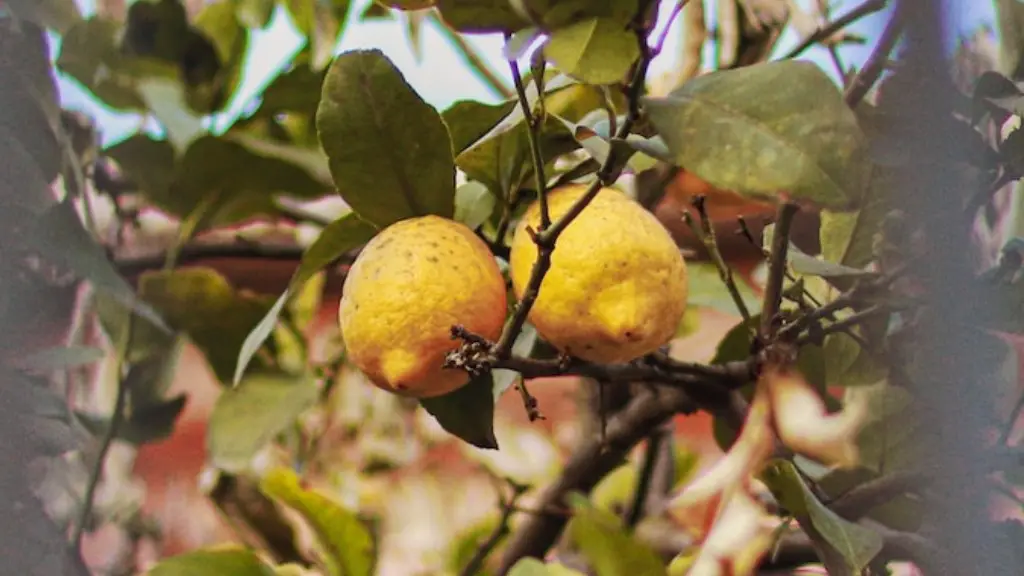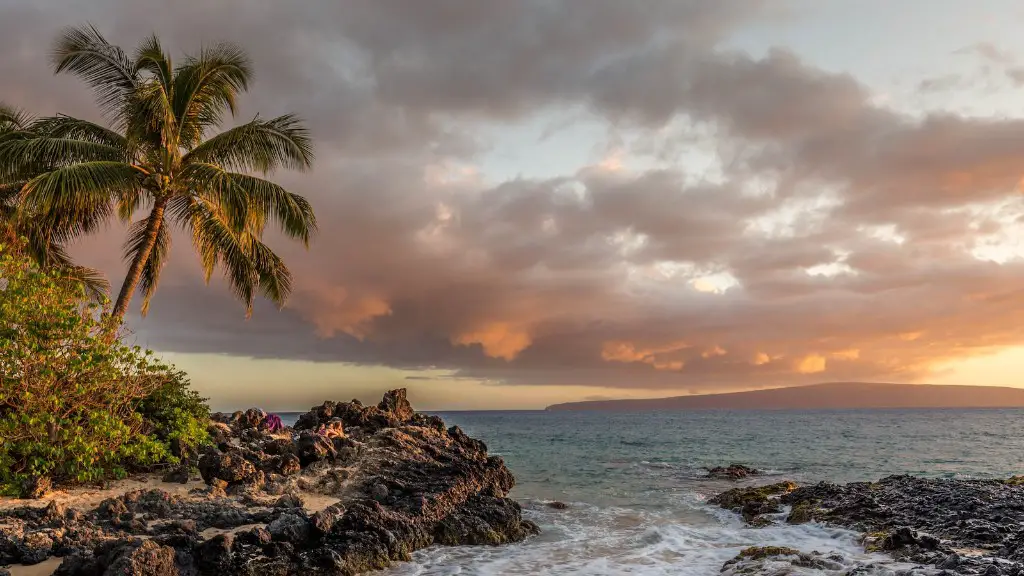When should you bring in your lemon tree? The answer to this question depends on several factors. First of all, it’s important to know the climate in your area. If you live in a mild or warm climate zone, you can leave it outdoors all year long. However, if your climate is colder, you should bring it indoors when the temperature drops below 50 degrees Fahrenheit for an extended period of time. Planting it in a pot will also give you the flexibility to bring it indoors when temperatures become too extreme.
To keep your lemon tree healthy and thriving, you’ll need to water it on a regular basis. In colder climates, you may need to water it more frequently since the air inside most houses is drier. Adjust the amount of water depending on the time of year and the climate. Your lemon tree could also benefit from regular applications of fertilizer, especially in spring and summer. Make sure to use fertilizers formulated for citrus trees.
As your lemon tree grows, it will need more room in the pot. Choose a new pot with good drainage and provide fresh soil for best results. When potting your lemon tree, keep the root system intact. Look for any damaged or soft roots, then prune them away. During this time, you should also pinch off any growing tips to ensure that the branches stay compact and productive.
These factors will help you to determine when it’s the right time to bring in your lemon tree. As the temperature drops, it’s a good idea to watch the forecast and take into account the amount of light your lemon tree is getting. It may be necessary to bring it inside earlier than expected depending on the weather.
Finally, keep in mind that lemon trees like open, airy spaces. Make sure to provide plenty of ventilation in its indoor location and avoid drafty areas. If your tree gets too little light, consider using artificial lighting. If you follow these steps, you’ll be able to maintain a healthy and productive lemon tree.
Types of Lemon Trees
There are many different types of lemon trees, and it’s important to know which one you have in order to determine when you should bring it in from the cold. If your tree is a cold-hardy variety, such as Meyer lemon, it will be able to withstand temperature dips as long as it’s in a pot rather than in the ground. On the other hand, trees such as Lisbon and Eureka are more temperamental, so they should be brought inside as soon as the temperatures drop below 50 degrees Fahrenheit.
Your potting soil also plays an important role in keeping your lemon tree healthy. Opt for a soil that’s rich in organic matter and has good drainage. If the soil is too dense or waterlogged, your tree may suffer from root rot or other diseases. The pot should also be large enough to allow for root growth and drainage.
When potting a lemon tree, it’s important to make sure its crown is slightly higher than the soil level. This will prevent water from pooling around the plant’s root system and causing root rot. Additionally, make sure you don’t over-water your tree as this can lead to problems as well. A hygrometer can be very useful in determining when your tree needs water.
Lemon trees can make great indoor plants, but you should know when to bring them inside in order to keep them healthy and productive. Cold-hardy varieties can handle a few temperature dips, while more temperamental trees should be brought in at the first sign of cold. Pay attention to the soil, potting, and watering requirements of your tree as well and before you know it, you’ll have a flourishing lemon tree in your home.
Location Considerations
When choosing a location for your lemon tree, you need to consider how much light it needs to thrive. Lemon trees prefer at least 6 to 8 hours of sunlight a day. If you live in a colder climate and bring your tree indoors for the winter, make sure you provide it with good, natural light. Patio doors and skylights are great options for getting plenty of sunlight into your home.
If your indoor space doesn’t get much natural light, you can use artificial light. Place your tree near a bright window or in front of a light fixture. Keep in mind that fluorescent lights are the best choice for indoor plants, as they provide an even light and the closest to natural light. For best results, move your tree to a different location every few weeks to make sure all sides get an equal amount of light.
In addition to providing light, you should also make sure your lemon tree gets good ventilation. Without proper airflow, the tree won’t get enough oxygen, which can lead to fungal diseases. Place the tree near a window and open the window frequently to let fresh air come in. Additionally, you should check your tree for pests regularly. Look for signs of aphids, thrips, mealybugs, and other common pests. If you see any, use an insecticidal soap to get rid of them and prevent infestations.
Deciding when to bring in and where to place your lemon tree depends on a variety of factors. Keep in mind that your tree needs at least 6 to 8 hours of sunlight a day and good ventilation. Regularly check for pests, water, and fertilize your plant, and make sure to move it to a different location every few weeks so it can get an even light.
Harvesting Lemons
Lemon harvesting is an essential part of caring for your lemon tree. Knowing when and how to harvest your lemons is key to getting the most out of your tree. Generally, lemons will be ripe and ready to harvest when they turn yellow or have a deep yellow-orange color. You can test for ripeness by gently squeezing the fruit. If it’s soft and pliable, it’s ready to pick.
When harvesting your lemons, use a pair of garden clippers or a sharp knife to cut the stem near the base. Avoid pulling the fruit off the tree, as this can damage the branches. Make sure to harvest ripe fruit only and leave any unripe lemons on the tree to ripen further. Additionally, remove any dead or damaged branches to help the plant stay healthy.
Once you’ve harvested your lemons, it’s important to store them properly to keep them fresh. Gently wrap each lemon in a paper towel and place them in a container in your refrigerator for up to three weeks. You can also freeze lemons for up to one year by placing them in a sealed plastic bag. Lemons in syrup or as lemon juice can also be frozen for up to a year.
Harvesting your lemons is an important part of caring for your lemon tree. Knowing when and how to pick your lemons is essential for getting the most out of your tree. Follow these steps to ensure fresh and flavorful lemons for months to come.
Prune Wisely
Regular pruning is another important part of caring for your lemon tree. Pruning keeps your tree healthy by removing dead and damaged branches, encouraging new growth, and improving air circulation. It also helps with pest control as it gets rid of places where pests can hide.
When pruning, use sharp, clean pruning shears. Start with pruning away any dead or unhealthy branches, then move onto cutting away any crossed or overlapping branches. Finally, you can selectively prune the healthy branches to promote better growth and more consistent fruit production. Make sure to cut at a 45-degree angle just above a healthy bud.
Pruning your lemon tree can also help to create a better shape and make it easier to manage. Aim for a balanced, well-spaced canopy with plenty of light and air circulation. Pruning too drastically or too frequently can stress the tree, so prune with caution. As a general rule, use a light touch and only remove one-third of the entire canopy per year.
When to prune your lemon tree can also be important. If you live in a warm climate, pruning in early spring is usually recommended. For colder climates, late winter or early fall may be a better time to prune. Again, go slowly and only prune away small amounts of branches at a time. Prune wisely to keep your lemon tree healthy, productive, and looking spectacular.




